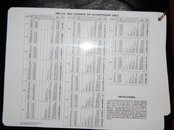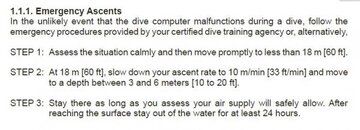My first mustang didn't have seat belts installed in it. Today both my Jetta and my Mustang have them. I wear the seat belts every time without fail. Progress is an interesting thing. Safety is too.
In the late 70's early 80's motorcycles started being equipped with fiberglass fairings over the front, shrouding the headlights and engine. A lot of my friends would rip the fairings off claiming that they slowed you down; you know, wind resistance and all.
Of course, as time went on and the engineering of these two examples was fully understood, all car manufacturers started installing seat belts and nearly all race bikes have fiberglass or carbon fiber fairings to slice effectively through the wing, enabling bikes to go faster. Dive Computers are the same way.
Dive computers (and I know most of you know this) aren't just a little bit better or just a little bit safer, or just allow you to dive a little bit longer. Dive computers are tremendously better. Especially if you get the right one. It's time to move out of the dark ages and move into the 21st century. Diving square profiles and tables is only costing you beautiful dive time. Wear two if you have to, but you're really missing out. Just like the early opponents of seat belts and fairings were missing out.
In the late 70's early 80's motorcycles started being equipped with fiberglass fairings over the front, shrouding the headlights and engine. A lot of my friends would rip the fairings off claiming that they slowed you down; you know, wind resistance and all.
Of course, as time went on and the engineering of these two examples was fully understood, all car manufacturers started installing seat belts and nearly all race bikes have fiberglass or carbon fiber fairings to slice effectively through the wing, enabling bikes to go faster. Dive Computers are the same way.
Dive computers (and I know most of you know this) aren't just a little bit better or just a little bit safer, or just allow you to dive a little bit longer. Dive computers are tremendously better. Especially if you get the right one. It's time to move out of the dark ages and move into the 21st century. Diving square profiles and tables is only costing you beautiful dive time. Wear two if you have to, but you're really missing out. Just like the early opponents of seat belts and fairings were missing out.









